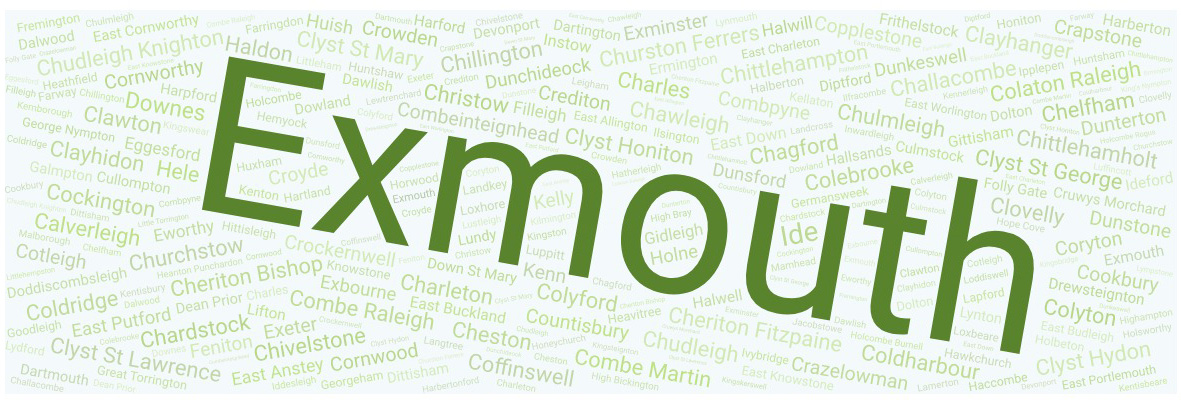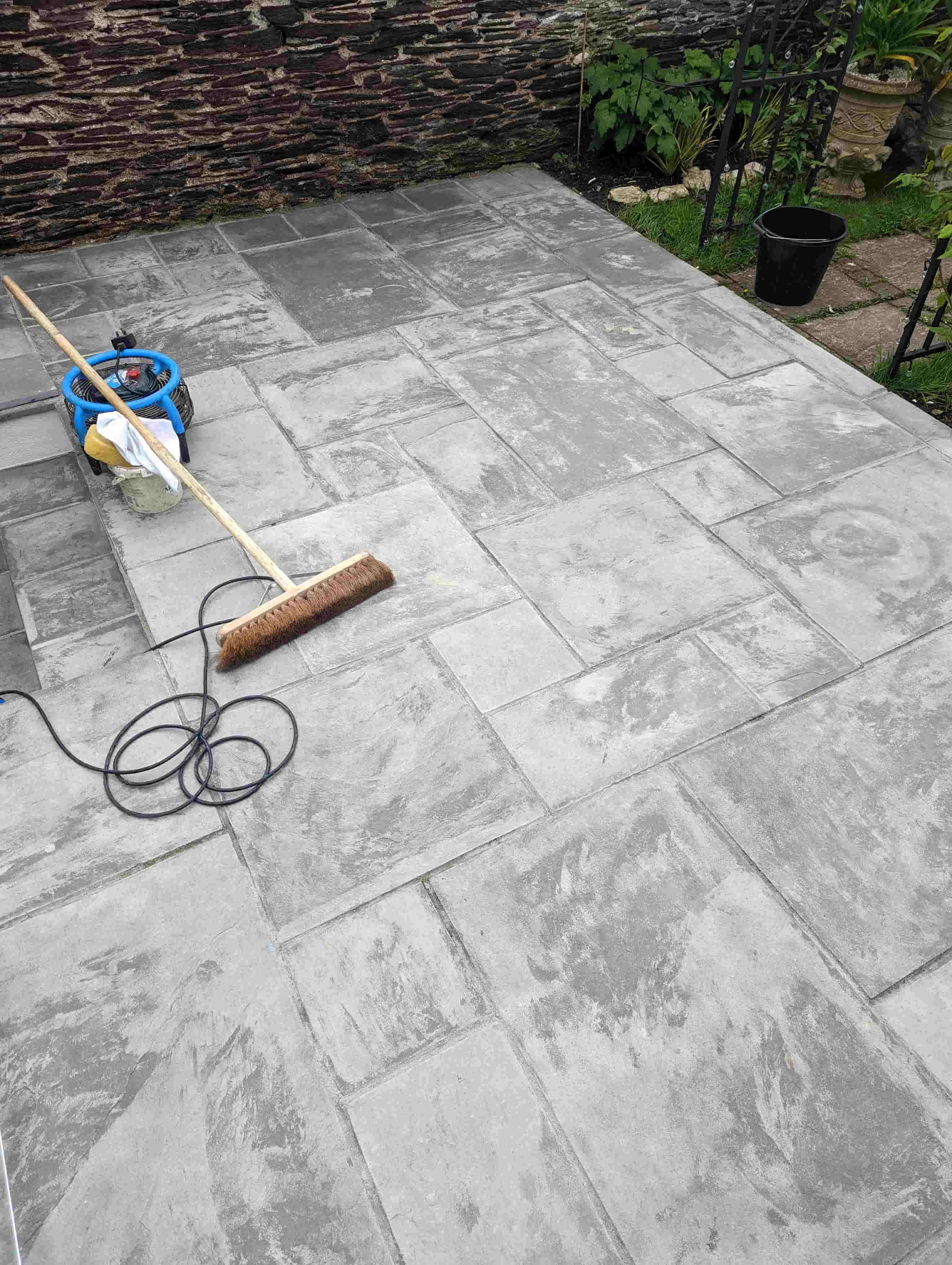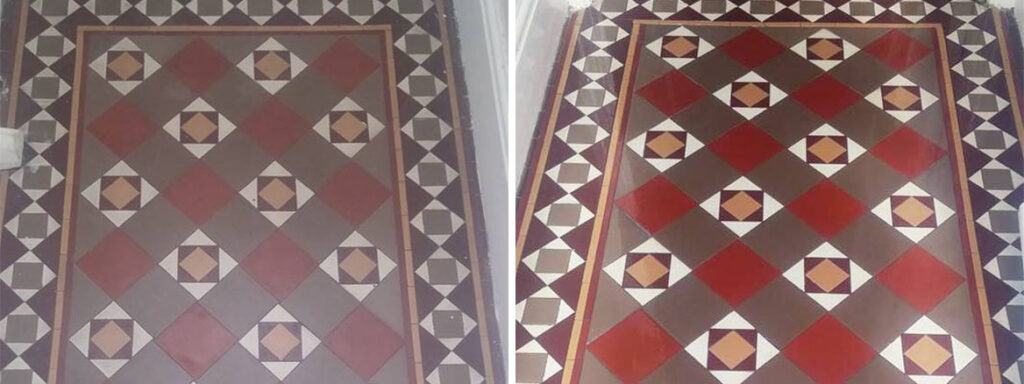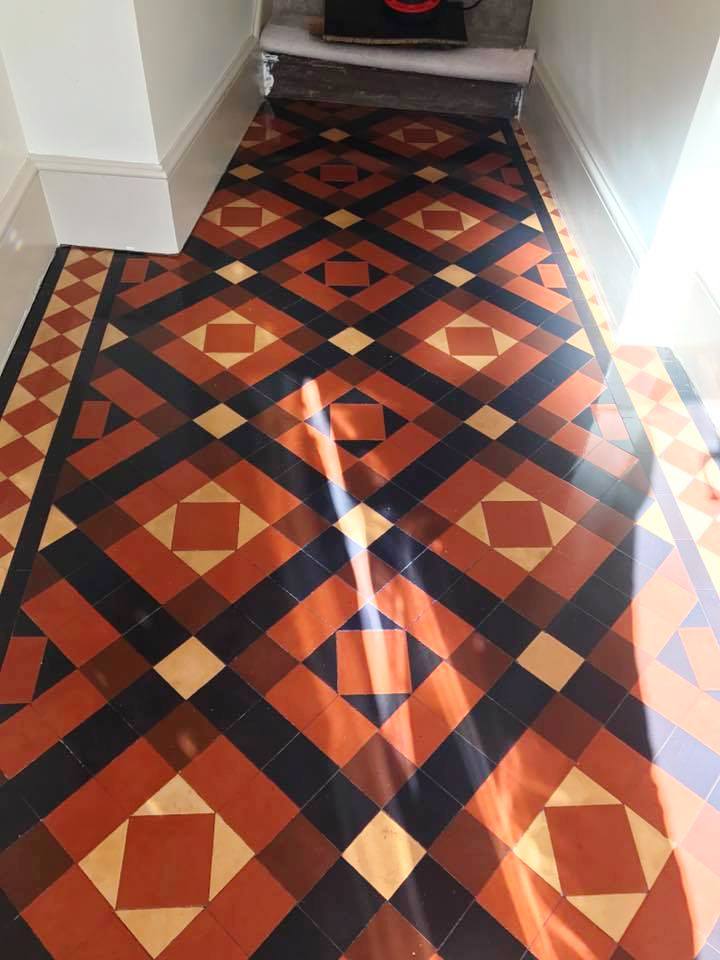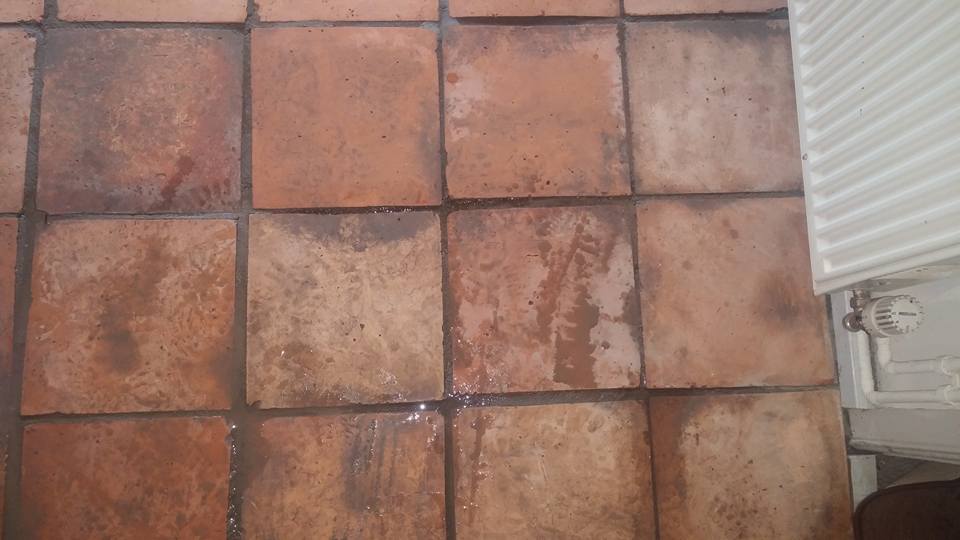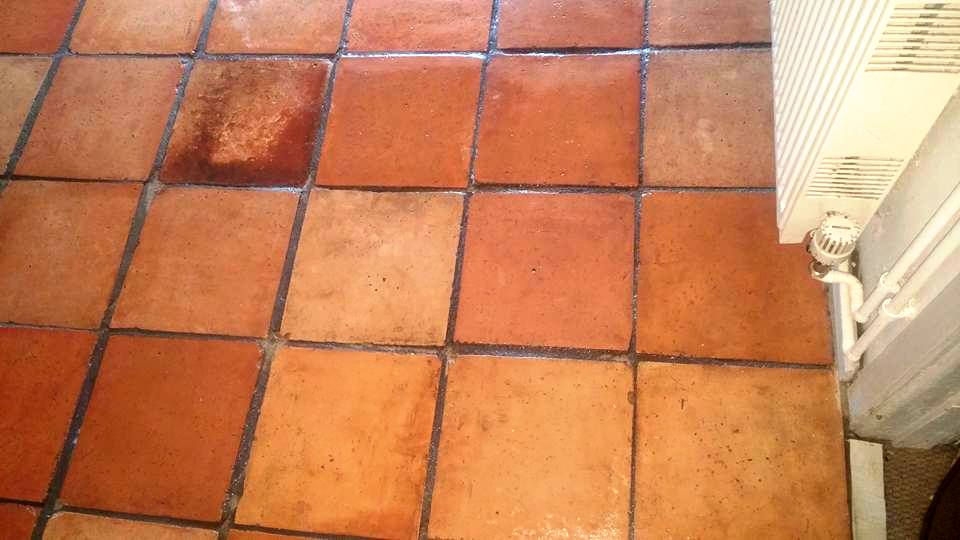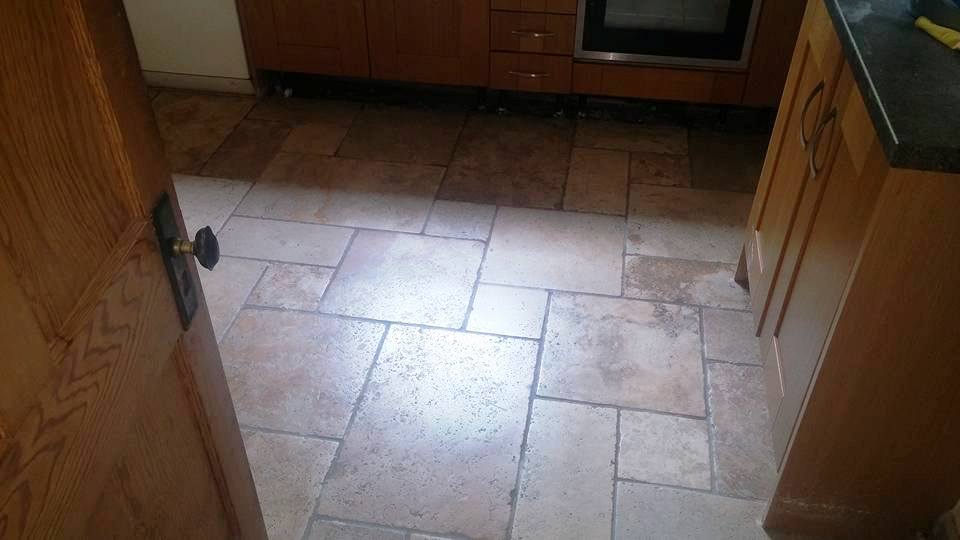Victorian Tiled Hallway Renovated Ready for House Sale in Exmouth
This owners of this grand Victorian property in Exmouth were putting their home on the market and so decided to have its beautiful patterned Victorian Tiled hallway floor renovated to its former glory first.

To get the best price for your property it needs looking its best and first impressions count so it makes sense to ensure the frontage and the hallway looks its best.
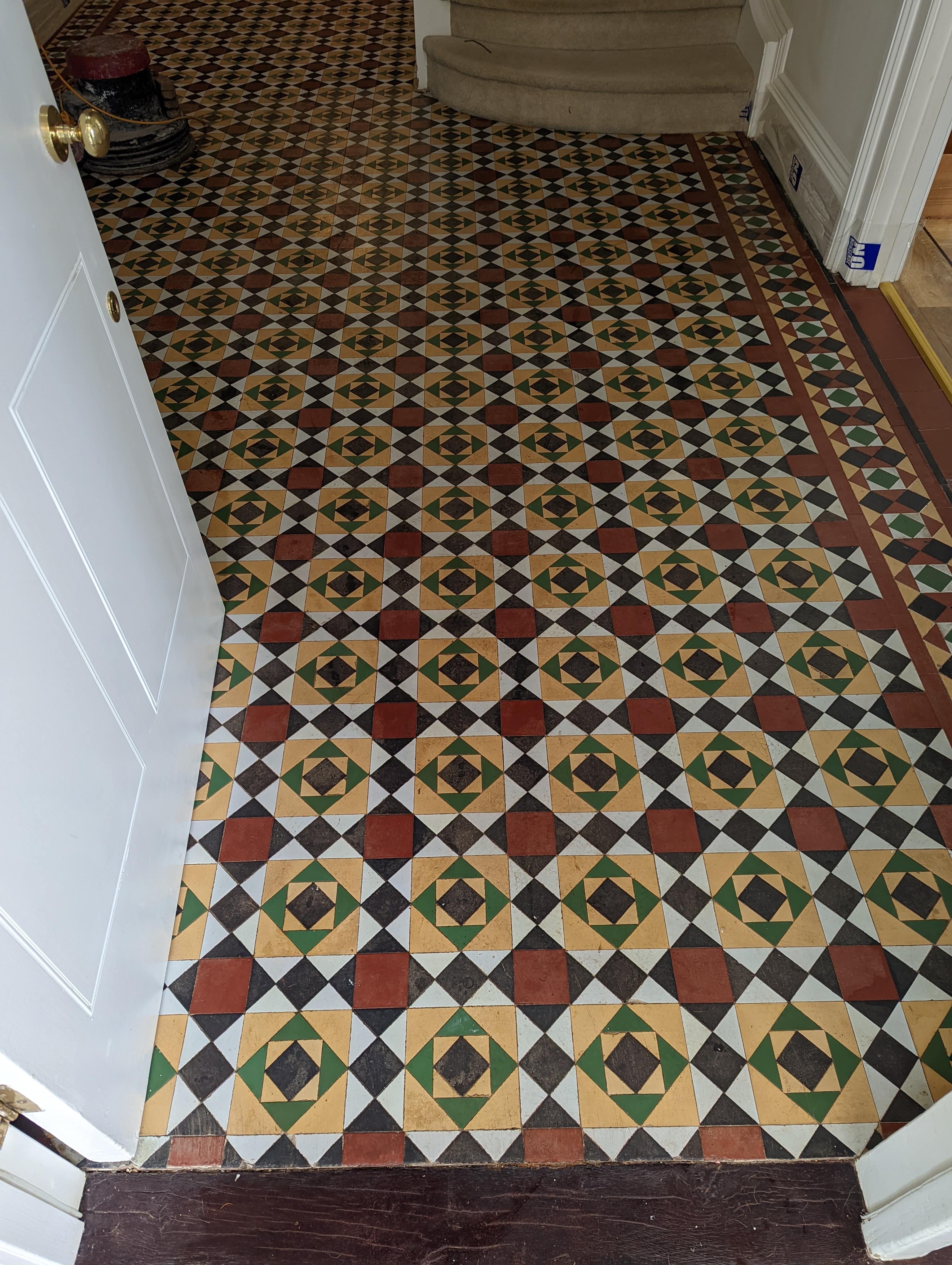
Deep Cleaning a Victorian Tiled Hallway Floor
I began by applying Tile Doctor Remove & Go to the floor which was then left to soak in for twenty minutes. This gives the product time to breakdown and emulsify existing sealers and loosen ingrained dirt. I then worked the floor with a 200-grit burnishing pad fitted to a rotary machine which had extra weights fitted to improve contact. The pads are made with industrial Diamonds that cut into and release the dirt bringing it to the surface where it can be removed. To help with lubrication the floor was wetted with minimal amounts of water, old floors like this one will not have had a damp proof membrane installed so it’s best to keep fluids at a minimum.
The now soiled cleaning solution was extracted with a wet vacuum and I hand cleaned around the perimeter with Diamond burnishing blocks. A few rinses were required to remove the now dirty cleaning solution from the floor, again keeping water to a minimum and extracting with the wet vacuum afterwards. The Victorian tile and grout were then left to dry off overnight with the assistance from a couple for floor dryer’s that I left in place overnight.
The following day I went back over the floor with the Diamond handheld burnishing blocks focusing on anything I may have missed the day before such as paints spots from decorating and other stains. Once satisfied I gave the whole floor an acid wash using Tile Doctor Grout Clean-Up worked in with a 400-grit burnishing pad. We do this to prepare the tiles for sealing and neutralises any leftover alkaline cleaning product left in the pores of the tile. This process also removes old grout smears and will counter any latent efflorescent salts in the tiles. Once done, the floor was rinsed, extracted, and left to dry off overnight as before.

Sealing a Victorian Tiled Hallway Floor
it’s probably difficult to tell how dirty the tiles were from the earlier photographs but by the time I returned on day 3 the customers were already chuffed with how much cleaner the floor was looking.
Moisture readings taken from the floor indicated it was dry enough to seal so I set about applying a base coat of a colour enhancing sealer called Tile Doctor Colour Grow. There was 36m2 of tiling through the hallway section and into the more heavily used entrance way so it took some time to apply. One that was dry I then applied a topcoat of Tile Doctor X-Tra seal to add further protection.
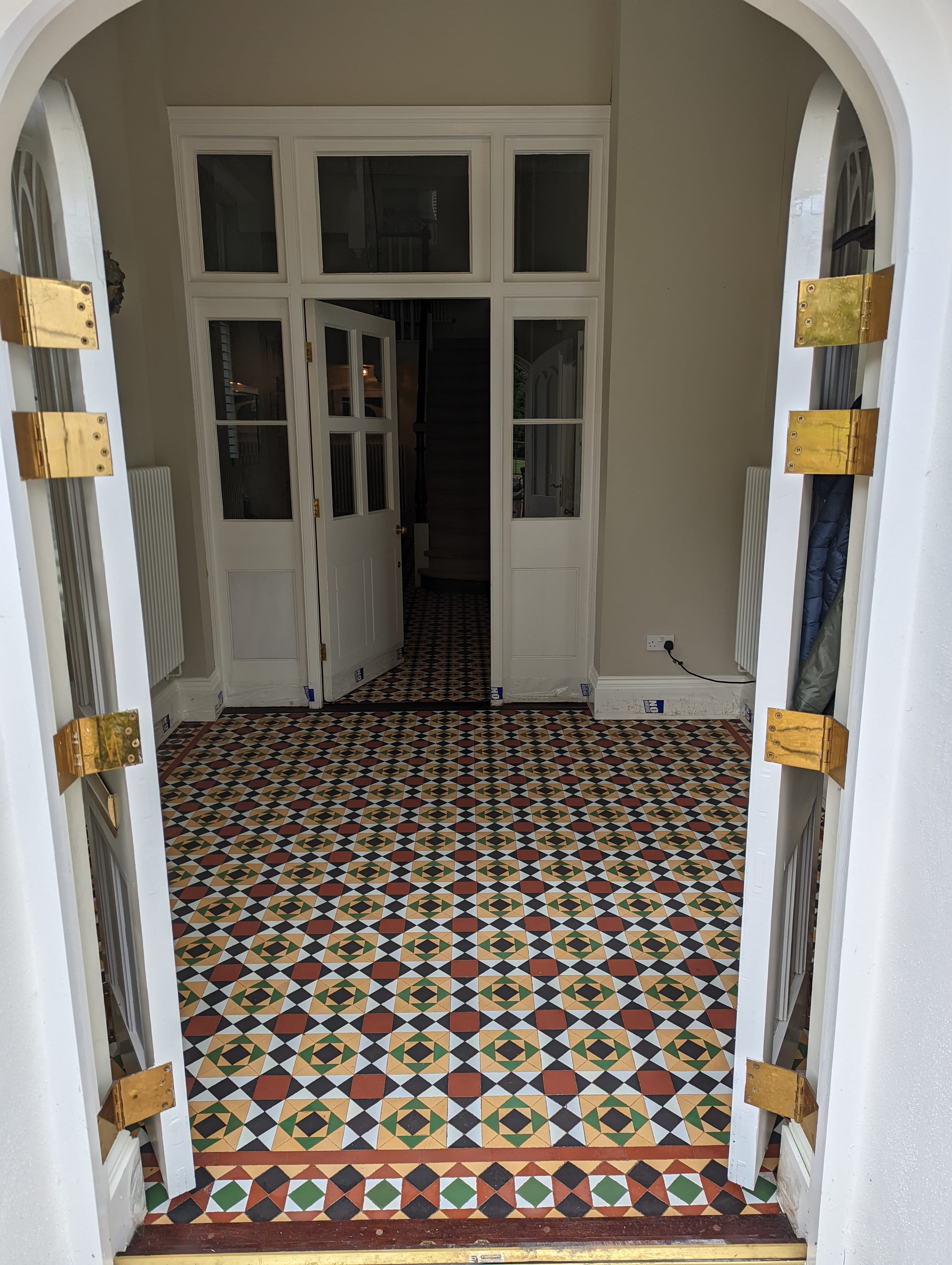
The new sealer will protect against dirt from muddy wellies, boots, and pets, keeping the dirt on the surface where it can easily be removed using an everyday cleaning product like Tile Doctor Neutral Cleaner.

Professional Renovation of a Victorian Tiled Hallway in Devon
Victorian Tiled Hallway Renovated Ready for House Sale in Exmouth Read More »
